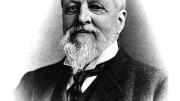Lee S. Shulman, president of the Carnegie Foundation for the Advancement of Teaching, says that “teaching remains a tiny part of the decision” when research universities make faculty appointments. “This is most true for what we call the most research-active doctoral institutions,” and throughout the span of a professor’s career, from a junior appointment through decades of promotion and tenured service.
In Shulman’s experience, some of the large public research universities (Michigan, Ohio State, Wisconsin) are “much more responsive” to expressions of interest in improving teaching and learning, and the next tier of state universities (Nebraska and Kansas, for example) have proceeded with “even more gusto” in this direction—usually at the behest of individual faculty members or departments, rather than throughout the institution.
The foundation has supported a program of resident scholarships for faculty members nationwide to explore ways to improve teaching and learning, to try to implement them in their home institutions, and to reach out to peers elsewhere in academia. Harvard Magazine spoke with two professors engaged in such work, and reports below on what they are doing.
More broadly, readers may also wish to consult What the Best College Teachers Do (Harvard University Press, 2004), by Ken Bain, then director of New York University’s Center for Teaching Excellence. It is full of vivid stories about what teachers know about how their students approach a subject, how they therefore prepare to teach, what their expectations are, and how they conduct their classes and evaluate the results.
Daniel J. Bernstein, professor of psychology and director of the Center for Teaching Excellence at the University of Kansas, was a scholar at the Carnegie Foundation in 1998. He explained in a recent interview that the leaders of public universities regularly encounter government officials and alumni who value teaching equally with research. In discussions with such figures, deans frequently find that there “isn’t good evidence of teaching” and, even given the relevance of student evaluations, academic leaders are loath to “make important decisions on the evidence of 20-year olds.” Those queries prompted Shulman (and his Carnegie predecessors) to “construe teaching as intellectual inquiry” and to evaluate teaching and learning in a context broader than simply making efforts to pass facts along to students. As a cognitive psychologist, Bernstein said, he became interested in “teaching as an ongoing inquiry into how people are learning,” assessment of which depends on instructors looking at the quality of their peers’ work.
As he investigated “reflective practice,” Bernstein worked on the “course portfolio as the representation of intentionality of a teacher”: understanding of the content, planned teaching practices, samples of students’ work throughout a course as evidence of learning, and peer evaluation of all of the above. Although such techniques are not widespread, he said, they have been proven to work in several institutions with which he has collaborated.
At Kansas, where he joined the faculty four years ago, after many years at the University of Nebraska at Lincoln, Bernstein is trying to build these disciplines into the teaching center. Rather than focusing on the techniques that make for a “good teaching performance,” he aims to “introduce this notion of ongoing inquiry into…everyday teaching.” In an era of “teaching awards inflation,” he hopes the center can make it easier to share exceptional teaching throughout the community (see www.cte.ku.edu). Bernstein sees “nothing dramatic here.” But by “just taking the kind of joy we get in other parts of our intellectual life and seeing that it is a successful approach in teaching,” he finds that faculty colleagues have become re-energized about their classes.
Another 1998 Carnegie Foundation scholar has applied this approach in his field and department. For more than a decade, Brian P. Coppola, Thurnau professor of chemistry at the University of Michigan, has experimented with ways to enhance student learning, part of a larger concern about educating the next generation of scientists. “When I think about how my colleagues and I get our work done” in laboratories, he said recently, the model is the research group led by a senior scientist who typically doesn’t do experiments. Instead, that scholar’s responsibility is to organize the work of postdocs, graduate students, and undergraduates, advancing the research agenda while seeing to the instruction and development of those he supervises. Transferring that model to the classroom and teaching, he says, is interesting and inviting for most faculty members, once they become aware that they can do so.
Coppola cited several experiments that colleagues had undertaken as a result. One, “studio chemistry,” arranges the teaching space to combine the functions of a lecture, laboratory exercises, and seminars. If a class focuses on pH, students can apply what they have just heard immediately at a lab bench, consult with one another, and demonstrate their understanding. At successive iterations of the course, the space is reconfigured to improve the learning environment. In another case, a lecture hall is being reconfigured to have “dinner theater” seating, with the students grouped around horseshoe-shaped tables, so they can both listen and share their understandings or doubts.
In Coppola’s own introductory organic chemistry course, an honors option involves students exploring a subject, preparing teaching materials about it, and presenting it to other students for their reaction—a way of showing they have learned the material by demonstrating their mastery of “pedagogical content knowledge,” or the ability to teach it to others. Not incidentally, this is a useful way of identifying future scholar-teachers. Some of his former students are now earning their first academic appointments, he said, in part because of their strong teaching credentials and commitment to teaching practice.
These experiments are gradually spreading to other fields, which have their own requirements and problems. Coppola professes himself an optimist. After all, he says, the data-driven techniques now characteristic of scientific research were themselves revolutionary in the nineteenth century. “In education,” he says, “we’re about where we were in science 150 years ago.”




